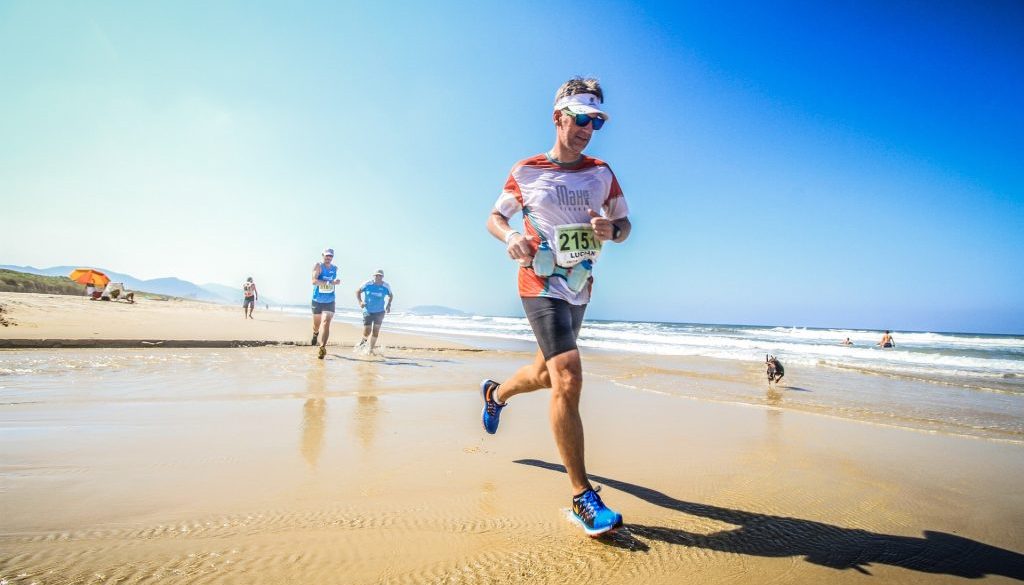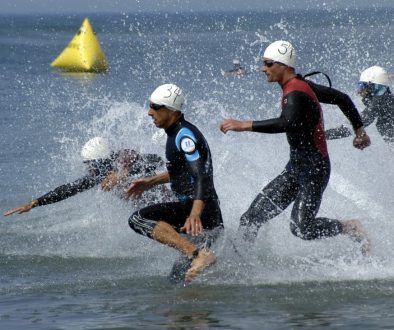I occasionally like to share the secrets of the pros, elite amateurs, and world class performers from all walks of life. Simple concepts that can be implemented in your own lives to push you toward unbelievable success. Today the secret that I’d like to share is a simple concept, with a lot of depth to its execution. That secret, quite simply, is consistency.
Everyone is searching for the magic bullet; the one action that will make a dramatic difference in one’s training, personal improvement, or career. I have yet to discover any single thing that is the key to unlocking all of the results in life, but consistency in reinforcing healthy habits is as close as you’re going to get to the golden egg.
Consistency Leads to the Development of Habits
Most people who have success in any field, especially with regard to athletics, or music, or anything that requires practice, have this in common: They consistently do the work, day in and day out. They practice their craft obsessively, and with purpose, in every aspect.
Even if they fail, even if they have setbacks, they still get back up and do the work. I know it sounds cliche, but it’s true, success is bred from repetition. Learning the right lessons from setbacks of failures can put you on the right path to success.
The million dollar question is, “How do we form healthy habits, and remove the unhealthy habits?” The simple solution to developing any habit: Do the action a lot, consistently. The simple answer to breaking any habit is the opposite: Don’t do the action, consistently.
Sounds simple, right? Unfortunately, our minds are working against us.
The Harsh Reality of Building and Breaking Habits. Habits Reinforce Consistency
The problem is this. Breaking bad habits is really hard! Creating new healthy habits is really hard!
But it doesn’t have to be. The only reason that it is hard to break a bad habit is that we associate so much pain with quitting. Take smoking for instance. Most people don’t want to quit smoking because their perception of the pain of withdrawal is so great that that they want to avoid that pain. So the bad habit remains. I know this because I have quit smoking… twice!
The same is true for creating healthy habits.
The primary reason that we fail to develop healthy habits is because we are associating pain with the healthy activity itself.
Famed performance coach, Tony Robbins goes into great detail about pain and pleasure, and how they influence our actions in his book “Awaken the Giant Within”. The same pain and pleasure principle applies as it relates to habit formation and consistency.
Here’s an example, imagine someone who has a New Year’s resolution to begin regularly swimming at the local YMCA. The first few days, he is entirely motivated, and jumps out of bed at the opportunity to get to the pool and begin swimming. This is the “honeymoon period” we’ve all experienced when we resolve to get fit and healthy.
After a short while the honeymoon period begins to end as the excitement of the new experience starts to go wane. Motivation becomes harder and harder to find. Instead, the excitement is replaced with boredom, or annoyance, or discouragement. The pain starts to outweigh the joy of the activity simply because the perception of the activity has changed.
-
I don’t want to wake up at 5 am, I need more sleep – pain.
-
The pool is too crowded, I don’t want to share a lane – pain.
-
I hate smelling like chlorine – pain.
-
I don’t have the time to swim – pain.
The list goes on and on, and the excuses only reinforce the pain. We’re incentivized to hit the snooze button because we associate less pain with staying at home in bed. Thus, we’re more inclined to skip the activity, consistency is lost, and the new habit is not reinforced. When we don’t reinforce a habit with consistent action, it’s like trying to chase a motor boat by swimming with your arms tied behind your back!
The Solution to Reinforcing and Imprinting Healthy Habits
Strong neural pathways are developed from consistent, habitual activity. Reinforce healthy habits immediately and consistently by associating them with greater joy and less pain. If you can accomplish this, you will continuously jump at the opportunity to perform the activity, whether it be running, meditation, rock climbing or crochet! You can do this by using the following tools:
-
Make the process simple – Overcomplicating a task is one surefire way to create more pain. Consider the complexity of the myriad of popular diet programs out theree. Think about all of the rules surrounding each of these fads, whether it be low-carb, paleo, intermittent fasting, etc. If you spend enough time in a grocery store or restaurant trying to find the foods you should or shouldn’t eat, eventually you give up and just buy a cheeseburger! Complexity kills joy, and it sure as hell makes it difficult to find the motivation to continue with the program. Wouldn’t it be simpler just to create a habit of eating healthier by cutting out sugar and processed foods? This will at least get you 90% of the way to your goal. Then, once you’ve developed the simple habit from consistently eating healthier, you can begin to focus your attention on the additional 10%. If we overcomplicate a process in the beginning stages of habit formation, we hurt our chances of succeeding. Challenges by their very nature are difficult to overcome for a variety of reasons. The more we can simplify and reduce the complexity of the process or the path to achieve the goal and overcome the challenge, the more the joy of the achievement will outweigh the pain of the process.
-
Heightened positive sensation – Our senses are associated very highly with attitude and state of mind. If you can find joy in what you see, hear, feel, smell, or perceive while performing the activity, you will be more likely to do it consistently and form a habit. This means being in tune with all your senses at any given moment during an activity, and shaping your perspective of those senses around gratitude and acceptance (to see how gratitude and acceptance can lead to reduced anxiety, check out this article).
-
Frame a positive mindset – We’re not always going to want to perform a workout, or eat healthy, or perform any number of activities which we want to develop into habits. This is why it is necessary to always shift your mindset to one of positive attitude before the activity. We never want to enter into an activity that we’re trying to habitualize with a negative mindset. The result would be to associate pain to the activity! Therefore, shifting the mindset during times of discouragement, unwillingness, or any number of negative thoughts is critical. You can do this through the following methods:
-
Before the activity, spend some time in meditation, specifically to clear your head of any negative or self-defeating thoughts.
-
Use visualization techniques to shift your focus onto your goal and the joys surrounding the achievement. Specifically picture yourself taking every step toward your goal successfully, and experience each joy as it comes.
-
Affirm positive thoughts in your mind, such as “I will achieve my goal”, while thinking about the joys you will experience when you successfully achieve the goal. Think of the lives you will touch, the confidence you will have, the reward, and the adventures to come!
-
Set mini goals to guide you on the path of your larger goal – I highly recommend setting up a goal hierarchy. If you’re not familiar with what that is, it’s simply a method by which to make the larger goal (the dream) more accessible through smaller, bite sized goals. For example, if your goal is to qualify for the Ironman World Championships, that is a very big and challenging goal! However, there are steps you can take to get there which make the process less daunting. Breaking that goal into smaller pieces will not only force your focus onto the present, but it will also increase your opportunity for achievement and fulfillment over the course of your journey through successive mini-goals. Achieving these mini goals will keep you engaged in the process as opposed to making you overwhelmed and discouraged by the enormity of the dream. Before you know it, your dream will be your next mini-goal!
-
Vary the activity – This is one of the many reasons why triathlon is such a great sport for physical and mental fitness. It’s three separate activities (four, if you count strength training). Variability breaks the monotony of the task and increases the level of excitement. As an additional measure, you can vary the environment in which you perform the activity. Change the path you run or bike. Swim at different pools, or find some open water swims.
-
Reward – When I say reward, this reward has to be reinforcing. Too often, people give themselves a reward that breaks the habit we are trying to reinforce. For example, if a person goes without sugar for a week, they may reward themselves with a piece of cake at the end of the week. While the pleasure of the cake may be felt at the time it is received, it is only creating and reinforcing long term pain with the habit we are trying to create! Here’s a better idea. If you’re trying to create a habit of consistently following every workout prescribed in a workout program, perhaps your reward can be a beach day. Take the opportunity to show off your new found self confidence. Of course it doesn’t have to be a beach day, as long as the reward is reinforcing of the habit you are trying to reinforce.
How Long Does it Take for a Habit to Form?
The beauty is that the more joy we associate with an activity and the greater the pain we associate with not doing the activity, the more quickly the habit is reinforced. At that point, skipping the activity actually becomes more painful than doing the activity! When that tipping point occurs, we will do everything in our power to avoid the pain of skipping the activity.
The time it takes depends on the level of joy we associate with the activity and the level of pain we associate with avoiding the activity. The greater the joy, the faster we form the habit.
Remember: Habits are reinforced by consistency, and our willingness to perform a task consistently depends on the joy or absence of pain we experience in the task. So stay joyful, do everything within your power to maintain a positive attitude, and enjoy the results you see from consistent habitual action.
Happy Training!
Like this post? Share it with your friends!



